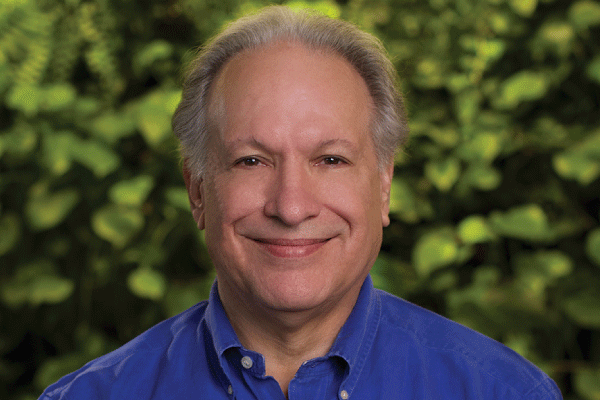First Person
Back Page: Awake at the Wheel

APS Fellow Mark Rosekind, chief safety innovation officer at Zoox and former head of the National Highway Traffic Safety Administration, is using psychological science to make roads safer for drivers and pedestrians alike.
What first drew you to the study of human fatigue?
While a sophomore psychology major at Stanford, I took a course entitled “Sleep and Dreams” taught by Dr. William Dement, who was part of the team that discovered REM sleep (rapid-eye-movement sleep) in the 1950s. An incredible course and passionate professor provided an opportunity to become a teaching assistant for the course and a research assistant on sleep projects. After graduation, I spent three years running sleep studies supervised directly by Dr. Dement; it was like doing a post doc before going to graduate school. Throughout graduate school, my post doc, and my initial positions at Stanford and NASA, my interests evolved to focus on sleep and human fatigue in real-world operational environments. These efforts have applied sleep science to improve safety, performance, and health for people in challenging safety-critical professions such as astronauts, pilots, healthcare providers, and transportation operators. This knowledge also can enhance the daily lives of the rest of us who may be sleep-deprived by work, travel, new babies, and other life challenges.
How did you find yourself applying your science during your career as a safety regulator?
Though it was rare to have a scientist as the head of the National Highway Traffic Safety Administration (NHTSA), it was an incredible advantage when confronting the agency’s safety, regulatory, and enforcement challenges. One of these advantages was being data driven when addressing situations and decision-making. NHTSA generates tremendous amounts of data, and as a scientist it was natural to work with that information to advance the agency’s efforts. Beyond the statistics, the data provided a basis to tell the human stories of crashes, injuries, and lives lost on US roadways. As a psychological scientist, another advantage was being able to apply knowledge about cognition, behavior change, emotion, and decision-making to the difficult task of promoting road safety and the political challenges of Washington, DC.
What is the accomplishment you’re most proud of from your tenure at NHTSA? Your biggest disappointment?
There are three accomplishments. First, we initiated a major overhaul of how defects and recalls are addressed, with more rigor and assertiveness (e.g., Takata airbag recall). Second, we obtained commitments from 20 automakers to make automatic emergency braking (AEB) standard equipment on 99% of new cars by 2022. This gets AEB into virtually all cars at least 5 years faster than would a regulatory path. Third, we issued the first Federal Automated Vehicles Policy that provided a foundation for the future of mobility with autonomous vehicles (AV). The biggest disappointment was that our 2-year effort to update the New Car Assessment Program (NCAP) fell short of being issued by a few months. Initiated 40 years ago in the US, the NCAP “stars for cars” program has significantly improved vehicle safety but needs updating.
Tell us about the role psychological science is playing in the development of safe autonomous vehicles.
NHTSA data show that 94% of crashes are related to a human choice or error. Understanding these human sources of error (e.g., decision-making, attention, reaction time) provides specific direction for solving problems of autonomous driving. Advanced Driver Assistance Systems (ADAS) are new technologies that provide support for the driving task and allow human drivers to monitor blind spots, maintain consistent speed, stay in a lane, etc. ADAS rely on knowledge of psychological science (i.e., human performance strengths and limitations) to develop effective technologies. Trust in the safety of autonomous vehicles will be critical to their acceptance and attaining their optimal benefits. Understanding emotions, values, decision-making, perception, experience, and factors that shape behavior will be critical in developing trust in AVs.
How soon do you predict that autonomous vehicles will be a staple on roadways?
Widespread availability of AVs will emerge over the coming 20 to 30 years, although self-driving vehicles are already in testing and demonstration pilot programs. Many ADAS technologies are already in vehicles on the road today. For context, last year, 36,560 lives were lost on US roadways (100 people every day) along with 2.7 million injuries in 6.5 million crashes. New technology innovations, including AVs, offer the most significant opportunity in 100 years to save lives and prevent injuries and crashes on our roads.
Back Page showcases interesting work by early- and mid-career psychological scientists. Know a good candidate? Contact The Observer at [email protected].





APS regularly opens certain online articles for discussion on our website. Effective February 2021, you must be a logged-in APS member to post comments. By posting a comment, you agree to our Community Guidelines and the display of your profile information, including your name and affiliation. Any opinions, findings, conclusions, or recommendations present in article comments are those of the writers and do not necessarily reflect the views of APS or the article’s author. For more information, please see our Community Guidelines.
Please login with your APS account to comment.